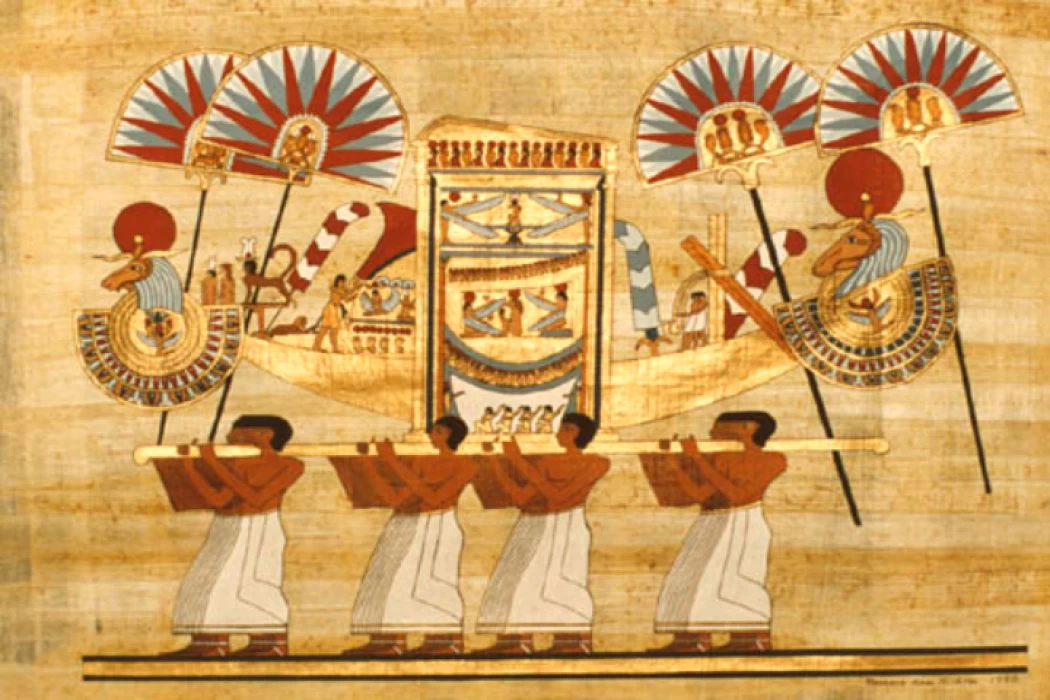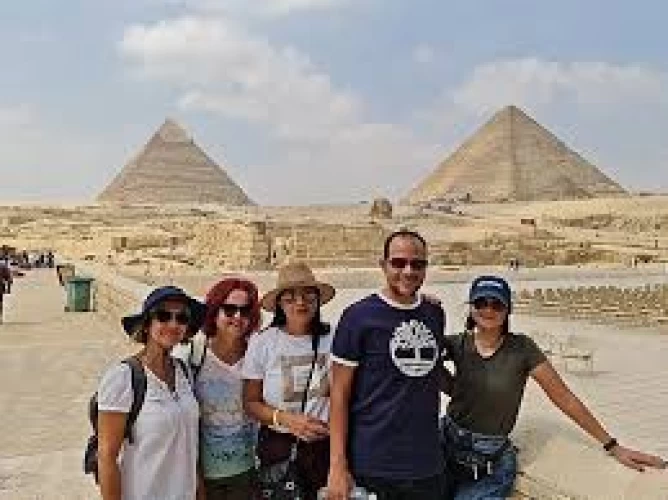
The Festivals of Opet
The Festivals of Opet
The Feast of Opt is an ancient Egyptian celebration, which was held in Thebes (Luxor) every year, during the New Kingdom and beyond, and is considered one of the most important calendar festivals in ancient Egypt, and it means in the ancient Egyptian language “Love Nefer An Opt” which means beautiful Opt.
In a magnificent ceremonial parade that stretched over two kilometers from the Temple of Amun in Karnak to the Temple of Luxor, the sculptures of the Theban triad gods—Amun, Mut, and Khonsu—were led out of sight on their holy boats to meet Amun-Ra of Karnak and Amun of Luxor. This is known as the "rebirth" ritual, which is the central theme of the Opt festival and typically included a ceremony to re-crown the king.
In the early ceremonies of the Opt Festival, the statues were taken along the ram road connecting the two temples, stopping at small temples filled with offerings along the way, where they were dedicated to the priests present for the ritual. Following the ceremonies in the temple of Luxor, the sacred boats would make their way back to Karnak.
The Ept ritual took place in the second month of the Akht season, which is when the Nile flood occurs, when sculptures were moved to and from Karnak and Luxor by boat on the river in the latter part of Egyptian history instead than by land rams. Along with the holy vessels, a royal boat sailed, and ceremonies in the "Divine King's Chamber" reaffirmed the king's legitimacy as ruler and remembered his coronation.
The festival known as Opt underwent rapid development during the early New Kingdom era (approximately between 1539-1075 BC), especially during the reign of the 18th Dynasty, after “expelling” the Hyksos invaders who ruled over the northern region of the Nile Valley for 200 years. In the year to 1458–1426 BC, during the reign of Thutmose III, the ceremonies were performed for 11 days. In 1187 B.C when the reign of Ramses III started, the duration of the festivities was increased to 24 days by the time he died in 1156 BC.
Over the years, the path taken for the procession connecting the temples has not remained constant; at times, it has involved traveling by foot along the Avenue of the Sphinx which is almost two-miles long and decorated with statues of mythical creatures and at other cases, the holy image has been ferried from Karnak Temple to Luxor Temple in a specially made bark, having been christened Osirhat-Amon in Egypt. The deity worshipped is Amun, which was the gold plated cedar of Lebanon bark. The front and the rear of this vessel have the image of a sacred ram associated with the deity.
The pharaoh played the role of mediator between Egyptian society and the gods during the ceremony at the Luxor temple, while the common people did not participate in the religious rituals. Although “the union of a god and his temple may seem like a sexual coupling,” the pharaoh used this connection to enhance their divine fertility and re-establish their right to rule over Egypt. The 'divine marriage' of Pharaoh with every goddess whom he married ensured that there would be yet another fertile year for Egypt primarily through large crops.
By reinforcing their position as "the first prophet of Amun-Ra, king of the gods," Egypt's highest title, the Opt festival strengthened the pharaoh's religious significance. The festival's fertility promotion reinforced the health of Pharaoh's lineage, as it “celebrated the renewal of Ka's power to Amun, transmitting the spirit of kingship into the eternal present,” allowing the royal family to maintain power over social classes. Religious rituals during the Feast of the Opt emphasized the king's possession and contributed to the consolidation of his power.















